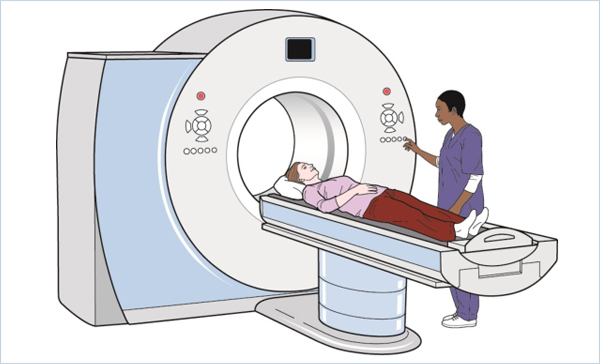
Everything You Need to Know About MRI Scans
Overview
MRI is a diagnostic imaging technique that creates detailed images of internal body structures, such as the brain, spine, joints, and other soft tissues. Unlike X-rays and CT scans, MRI does not use ionizing radiation. Instead, it uses a powerful magnetic field and radio waves to produce images of the body. MRI images are highly detailed and provide more information than other diagnostic imaging tests.
Why it's done
MRI is used to diagnose a wide range of medical conditions and injuries. It is often used to diagnose problems with the brain and nervous system, such as multiple sclerosis, brain tumors, and strokes. MRI is also used to diagnose joint problems, such as torn ligaments, cartilage damage, and arthritis. Other conditions that may be diagnosed with an MRI include spinal cord injuries, breast cancer, and prostate cancer.
Various types of MRI in detail
There are different types of MRI scans, and each type is used to evaluate different parts of the body. Some of the most common types of MRI scans include:
Brain MRI: This type of MRI is used to examine the brain for abnormalities such as tumors, inflammation, and bleeding.
Spine MRI: This type of MRI is used to evaluate the spinal cord and nerves for injuries, herniated discs, and other spinal cord problems.
Musculoskeletal MRI: This type of MRI is used to diagnose joint problems, such as torn ligaments, cartilage damage, and arthritis.
Breast MRI: This type of MRI is used to detect breast cancer in women who have a high risk of developing the disease.
Abdominal MRI: This type of MRI is used to examine the organs in the abdomen, such as the liver, pancreas, and kidneys, for abnormalities.
Risks associated
MRI is considered a safe and non-invasive diagnostic imaging test. However, some people may experience side effects from the test, such as claustrophobia, anxiety, and allergic reactions to the contrast dye. MRI is not recommended for people with certain medical conditions, such as pacemakers, cochlear implants, and certain types of metal implants.
How to prepare for the test
Before the MRI, you will be asked to remove any metal objects, such as jewelry and watches. You may also be asked to change into a hospital gown. You should inform the radiologist if you have any metal implants, such as a pacemaker, and if you are pregnant or breastfeeding. You should also inform the radiologist if you have any allergies or medical conditions.
What to expect during and after the test
During the MRI, you will lie down on a table that slides into the MRI machine. The machine will make a loud banging noise as it takes pictures of your body. You will need to lie still during the test to ensure that the images are clear. After the test, you can resume your normal activities immediately.
How the result of the MRI test is prepared
After the MRI, the images will be reviewed by a radiologist who will interpret the results. The radiologist will then prepare a report that will be sent to your doctor. Your doctor will discuss the results with you and recommend a treatment plan if necessary.
In conclusion, MRI is a safe and non-invasive diagnostic imaging test that provides detailed images of internal body structures. It is used to diagnose a wide range of medical conditions and injuries, and there are different types of MRI scans that are used to evaluate different parts of the body. While there may be some risks associated with the test, such as claustrophobia and allergic reactions, the benefits of the test outweigh the risks.
To book MRI Scans, click here.
For any queries or to get in touch with us, visit: https://saraldiagnostics.com/contact
Or Call Us at +9147111111 (Delhi) or +919580007000 (Noida)
Other Posts

5 Flu-Fighting Foods for Boosting Immunity

Instructions for CT Patients

Importance of HbA1c Testing for Diabetes

MONKEY POX - What you need to know ?




